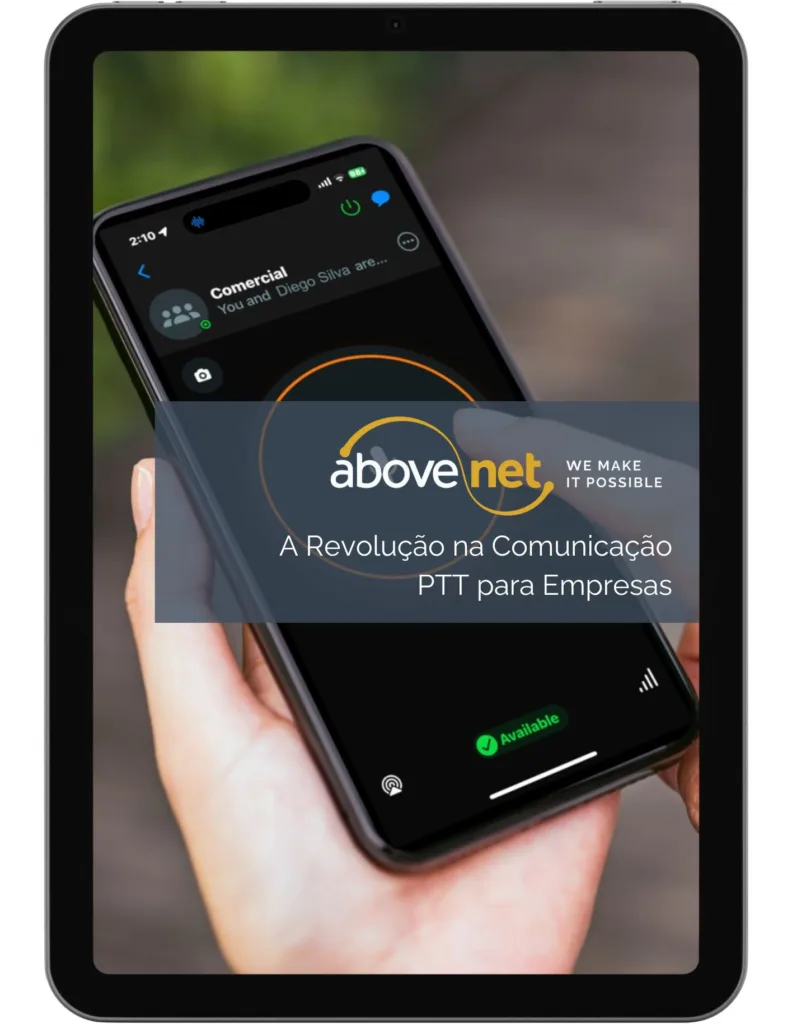Operational teams need to communicate constantly to ensure the safety and efficiency of operations. However, communication is often interrupted by range limit, unloaded batteries, congested channels, cross conversations and interference. This scenario is more common than imagined and generates huge damage to companies. Inefficiency in communication can be catastrophic, especially in critical environments where each second accounts.
In this article, we will see the main communication problems between operational and field teams and present the solution that can transform communication, generating an immediate and significant return on investment (ROI).
Common problems of traditional LMR (Land Mobile Radio) Radios HT (Handheld Transceivers)
Traditional radios, known as LMR HT, are widely used in field operations. However, these devices have a number of problems that compromise communication efficiency:
- Signal interference and limitation: In environments such as undergrounds or areas with concrete and iron structures, the signal of HT radios is virtually nonexistent. This results in “shadow zones” where communication is interrupted.
- Battery dependence: HT radios depend on batteries that rarely last a full day of intense work. The constant need for reserve batteries increases complexity and operating cost.
- Channel congestion: With multiple users talking on the same channel, the clarity of communication is compromised, increasing the risk of misunderstandings and operational errors.
- Limited range: The reach of HT radios is restricted, especially in extensive industrial areas. Even with special antennas, communication is limited to the perimeter of the antenna, leaving teams disconnected when outside this area.
Excessive costs of acquisition, maintenance and use of LMR HT radios
 Maintaining an efficient communication network with HT radios is expensive and ineffective. Companies face high costs with the acquisition and maintenance of these devices. In rent contracts, the values can reach hundreds of reais by radio, in addition to the cost of batteries and accessories. Additionally, if a radio is defective, it is common for the contract to require payment of the amount of a new radio, further raising spending.
Maintaining an efficient communication network with HT radios is expensive and ineffective. Companies face high costs with the acquisition and maintenance of these devices. In rent contracts, the values can reach hundreds of reais by radio, in addition to the cost of batteries and accessories. Additionally, if a radio is defective, it is common for the contract to require payment of the amount of a new radio, further raising spending.
For example, in a large petrochemical complex, the monthly cost to maintain 20 operational radios, including batteries and lapel headphones, may exceed 12 thousand reais a month. This cost does not account for communication interruptions that cause significant delays and operational losses.
Solution: Zello Work from Above-Net
Above-Net offers Zello Work in Brazil as the revolutionary solution to overcome the challenges of field team communication. Zello Work is an application-based smartphone communication platform capable of implementing PTT (Push-to-Talk) communication in privately efficient corporate network, and replacing LMR HT radios. Its main advantages include:
- Unstembling connectivity: Using any data network such as Wi-Fi or mobile, Zello Work ensures continuous communication. Even in limited signal areas, messages are recorded and delivered as soon as the user returns to the area with the minimum signal.
- Cost Economy: Zello Work is significantly cheaper than HT radios. With a monthly rate per user, the need for investment in additional hardware is eliminated as any smartphone can be incorporated into the corporate network.
- Advanced functionality: In addition to voice communication, Zello Work allows for sending photos, text messages, georeferencing and emergency calls. All communications are encrypted and cannot be sent to another app, ensuring security and privacy.
- Ease of use: Zello Work can be installed on existing mobile devices, eliminating the need to load and maintain multiple devices.
Results: ROI and efficiency in communication between teams with multiple benefits
To demonstrate the positive financial impact, we will analyze a fictional situation based on real data. Suppose a large industrial company is using 300 HT radios in its operations. The rental costs of each radio added to those of reserve batteries, lapel headphones and constant maintenance, raise the monthly costs to about 100 thousand reais.
 When migrating to Zello Work, the company pays up to 150 reais per user monthly. Considering that most companies already have corporate smartphones for other purposes, for the same 300 users, the monthly cost would be up to 45 thousand reais. Even by including the eventual improvement of the plant's wireless network structure, lapel microphones and other operational accessories for the use of Zello Work, the economy would be over 500 thousand reais per year.
When migrating to Zello Work, the company pays up to 150 reais per user monthly. Considering that most companies already have corporate smartphones for other purposes, for the same 300 users, the monthly cost would be up to 45 thousand reais. Even by including the eventual improvement of the plant's wireless network structure, lapel microphones and other operational accessories for the use of Zello Work, the economy would be over 500 thousand reais per year.
In addition to the direct economy, Zello Work offers much superior features than HT radios. The Dispatch Center organizes the calls and the communication groups. Recorded messages ensure that no crucial information is lost even if the user is temporarily out of reach. The ability to send photos and texts, in addition to voice communication, improves the accuracy of instructions and reports, while end -to -end encryption increases the safety of communications.
In short, the implementation of Zello Work results in a significant return on investment (ROI). Reducing communication costs and increasing efficiency, companies observe improvements in productivity and safety of operations. Clear and constant communication allows teams to quickly respond to emergencies and coordinate activities more effectively, minimizing inactivity time and errors.
To learn more about how Zello Work can turn communication into your business, download our catalog: The PTT Communication Revolution for companies.

Application
The PTT Communication Revolution for Companies
The catalog The PTT Communication Revolution for companies Above-Net Zello Work exceeds the limitations of traditional LMR HT radios. Provides unlimited, organized and auditable communication. Ideal for companies seeking efficiency and safety, allows multiple channels, messaging, rapid response via hub dispatch and integration with the intelligent industrial Bridgemeter IoT.


